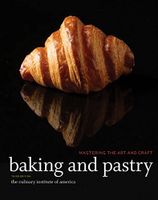Advertisement
Keep Foods Out of the Danger Zone
By Culinary Institute of America
Published 2015
An important weapon against pathogens is the observance of strict time and temperature controls. Generally, the disease-causing microorganisms found in foods need to be present in significant quantities in order to make someone ill. (There are exceptions, however, E. coli 0157:H7 being one.) Once pathogens have established themselves in a food source, they will either thrive or be destroyed, depending upon how long foods are in the danger zone of 41° to 140°F/5° to 60°C.
There are pathogens that can live at all temperature ranges. For most of those capable of causing food-borne illness, the friendliest environment is one with temperatures from 41° to 140°F/5° to 60°C—the danger zone. Most pathogens are either destroyed or will not reproduce at temperatures above 140°F/60°C. Storing food at temperatures below 41°F/5°C will slow or interrupt the cycle of reproduction. (It should be noted that intoxicating pathogens may be destroyed during cooking, but any toxins they have already produced are still there.)

